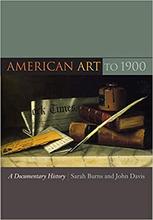More about The Cotton Pickers
- All
- Info
- Shop

Contributor
Winslow Homer is the quintessential American painter of the 19th century, but unlike his peers who created caricatures of America’s most vulnerable communities, The Cotton Pickers is a realistic representation of African American Life after the Civil War.
This painting, like many of Homer’s work from the post-civil war era, is intense. The viewer is left to think, but the Civil War is over, why are these women still picking cotton? Why do we feel upon looking at this painting a overwhelming feeling of emptiness and loss? Because Homer was instrumental in portraying emotion in the American Realism movement, illustrating life of veterans and African Americans after the Civil War ended, and in this painting, life seems to go back to normal.
Or is it? These are the questions and feelings one is overcome by looking at Winslow Homer’s paintings including The Cotton Pickers. In the 1870s, Winslow Homer returned to Virginia where he had lived during the war to get a feel for how the community changed and in particular, what happened to the former slaves now free in the post-war era. This painting was completed in 1876, which not only marked the year of the Country’s centennial anniversary but more importantly, it marked the end of the Reconstruction as federal troops withdrew from the south. The Reconstruction era idealized the notion that former slaves lives would drastically improve as they were freed and educated. Unfortunately, racism and bigotry destroyed any hope of change and progress, issues Americans still (frustratingly) grapple with today.
From Homer’s observations and depiction of the two women in The Cotton Pickers, it appears nothing has changed at all. As one of the figures stares into the distance, one can’t help think that newly minted freedom is fleeting and aftermath of war keeps progress at a standstill. Some have related Homer’s post-Civil War paintings to another Homer of The Odyssey, where the lead Odysseus is also forced to grapple with his identity and purpose after the Trojan War. The Cotton Pickers is an accurate representation of African American identity living in Virginia in the 1870s. They may be free, but the back-breaking labor of their work is still an ever-present constant in these two figures' lives.
Although it is easy to feel overwhelmed and saddened by the fact that these freed slaves are still working in the cotton fields of Virginia, the woman’s strong gaze into the distance gives hope that maybe freedom isn’t fleeting and that progress is possible. In Homer’s own words, “Is there any hope in the future for these two free field workers? The woman at left looks down, focused on her task. Cotton surrounds her, as though her world is circumscribed by her work in the fields. Her companion, head up and eyes alert, gazes with determination at what lies beyond. Her sack holds the cotton she has harvested but might easily serve as a sack for her belongings should she dare to step forward into a different life.”
Sources
- Binkovitz, Leah. "At American Art: A New Look on How Artists Recorded the Civil War." Smithsonian.com. November 16, 2012. Accessed August 08, 2018. https://www.smithsonianmag.com/smithsonian-institution/at-american-art-…
- Cikovsky, Nicolai, and Franklin Kelly. Winslow Homer. Washington D.C.: National Gallery of Art, 1995. Google. P. 149-150.
- Kabat, Jennifer. "Articulating the Unspeakable: Art-making during Wartime." Salon. August 16, 2013. Accessed August 08, 2018. https://www.salon.com/2013/08/18/articulating_the_unspeakable_artmaking….
- "The Cotton Pickers, 1876 by Winslow Homer." Prisoners from the Front,1866 by Winslow Homer. Accessed August 08, 2018. http://www.winslowhomer.org/the-cotton-pickers.jsp.
- "The Cotton Pickers." Accessed August 8, 2018. https://collections.lacma.org/node/184714.
- "Winslow Homer and His Paintings." Prisoners from the Front,1866 by Winslow Homer. Accessed August 08, 2018. http://www.winslowhomer.org/
Featured Content
Here is what Wikipedia says about The Cotton Pickers
The Cotton Pickers is an 1876 oil painting by the American artist Winslow Homer. It depicts two young African-American women in a cotton field.
Stately, silent and with barely a flicker of sadness on their faces, the two black women in the painting are unmistakable in their disillusionment: they picked cotton before the war and they are still picking cotton afterward.
The painting is in the collection of the Los Angeles County Museum of Art (LACMA).
Check out the full Wikipedia article about The Cotton Pickers














